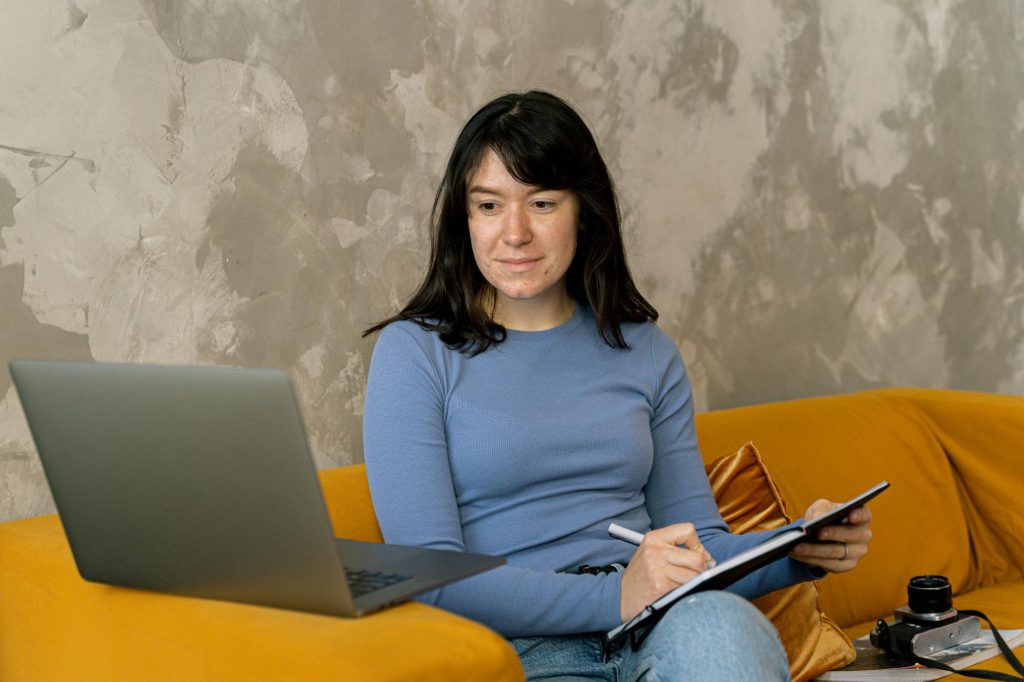Mindful Practices That Enhance Productivity
Jessica White August 18, 2025
Productivity is no longer just about working faster or pushing through longer hours. With remote work, constant notifications, and digital overload shaping modern lifestyles, people are beginning to realize that working harder isn’t always the solution. Instead, mindful practices that enhance productivity are becoming an emerging trend in lifestyle and workplace discussions.
From Fortune 500 companies adopting mindfulness training to individuals using simple practices like breathwork or structured breaks, the focus is shifting toward balancing attention, mental clarity, and energy. This article explores how mindful living is transforming productivity, why it’s trending now, and practical strategies you can apply in your own life.

Why Mindfulness is Emerging as a Productivity Trend
In the past, productivity was measured by how many tasks you could check off in a day. But in today’s lifestyle, where attention is constantly fragmented by technology, people are realizing that output depends less on speed and more on focus.
According to a 2024 report by the American Psychological Association, mindfulness practices—such as meditation, mindful walking, or intentional breaks—can reduce stress and improve task accuracy by as much as 20% (American Psychological Association, 2024). This data is fueling adoption in both workplaces and personal routines.
At the same time, companies like Google, Intel, and General Mills have integrated mindfulness programs, citing improved employee focus and reduced burnout (Harvard Business Review, 2022). Beyond corporations, younger professionals are actively seeking lifestyle strategies that make work sustainable rather than draining.
The rising popularity of mindfulness apps like Headspace and Calm also shows that this isn’t just a workplace trend but a personal lifestyle movement.
Key Mindful Practices That Enhance Productivity
Here are practical strategies supported by research and real-world adoption. These practices are not about slowing down work—they’re about sharpening the mind so tasks feel less overwhelming and more intentional.
1. Start the Day With Intentional Focus
How you start your morning can set the tone for your entire day. Instead of rushing straight into emails or social media, try beginning with a 5- to 10-minute mindfulness practice.
- Morning meditation: Focus on your breath to train attention before distractions pile up.
- Gratitude journaling: Writing down three things you’re grateful for has been shown to improve emotional regulation.
- Single-task planning: Pick the most important task of the day and commit to tackling it first.
This isn’t about adding extra rituals but about redirecting mental energy before it scatters.
2. Use the “Mindful Break” Strategy
Breaks are not wasted time—they are essential for sustained focus. Research published in the journal Cognition (2021) found that short breaks during long tasks significantly improve accuracy and reduce mental fatigue.
Mindful breaks could include:
- Box breathing (4-4-4-4): Inhale for 4 seconds, hold for 4, exhale for 4, hold for 4.
- Digital pause: Step away from screens and notice your surroundings without judgment.
- Stretching or walking: Gentle movement enhances circulation and clears mental fog.
Even two to three mindful breaks throughout the day can reset productivity levels.
3. Apply the Single-Task Principle
Multitasking is often celebrated but usually leads to mistakes and slower performance. A Stanford University study found that people who multitask regularly have reduced ability to filter irrelevant information and switch between tasks effectively (Stanford University, 2020).
Instead, try mindful single-tasking:
- Close unused browser tabs.
- Silence notifications during focused work.
- Use time blocks (e.g., 25–50 minutes) where only one task is allowed.
This not only improves quality but also makes work less mentally exhausting.
4. Incorporate Mindful Eating for Sustained Energy
What and how you eat impacts focus as much as sleep or exercise. Mindful eating—paying attention to food without multitasking—can prevent energy crashes.
- Avoid working lunches at your desk.
- Chew slowly and notice flavors and textures.
- Opt for balanced meals with protein, healthy fats, and complex carbohydrates.
This prevents the mid-afternoon slump many experience after rushed, carb-heavy meals.
5. Leverage Mindful Technology Use
Technology drives much of our productivity, but it can also sabotage it. Mindful use doesn’t mean avoiding tech—it means controlling it.
- Set notification windows: Check email or messages at scheduled times.
- Declutter apps: Remove unused apps that create digital noise.
- Mindful scrolling: Ask yourself if opening a social app is intentional or a reflex.
Many people find productivity spikes when they reduce unintentional screen time.
6. End the Day With Reflection
Just as mornings can set the tone, evenings can reset the mind for rest. Ending the day mindfully helps separate work from personal time and supports recovery for the next day.
- Reflection journaling: Write down three things you accomplished and one improvement for tomorrow.
- Evening meditation: A short session helps quiet the mind before sleep.
- Tech cutoff time: Turn off screens at least 30 minutes before bed to improve sleep quality.
This closing ritual provides mental closure and reduces the likelihood of overthinking at night.
Why These Practices Work: The Science Behind It
The effectiveness of mindful practices is backed by neuroscience. Regular mindfulness training increases gray matter density in the prefrontal cortex, the area responsible for decision-making and focus (Harvard Medical School, 2022).
Additionally, mindfulness lowers cortisol levels, the hormone linked to stress, which otherwise reduces productivity and mental clarity. By shifting from autopilot to intentional awareness, the brain conserves energy for tasks that matter most.
Practical Guide: Building a Daily Mindful Productivity Routine
If you’re new to mindfulness, start small. Here’s a simple structure you can adopt:
Morning (5–10 minutes):
- Meditation or gratitude journaling.
- Choose your top task for the day.
Midday (5 minutes):
- Mindful breathing or stretching break.
- Eat lunch without screens.
Afternoon (5 minutes):
- Short walking break.
- Refocus on single-tasking for the final push.
Evening (10 minutes):
- Reflection journaling.
- Screen-free wind-down before bed.
This adds less than 30 minutes of mindfulness to your day but significantly improves focus and energy.
Why Mindful Productivity is a Lifestyle, Not a Quick Fix
Many productivity hacks focus on tools, apps, or shortcuts. But mindful productivity is different because it’s rooted in lifestyle change. It doesn’t require expensive technology or rigid schedules. Instead, it’s about being intentional in the present moment—whether that’s working, eating, or resting.
By treating productivity as a balance of focus and recovery, rather than constant effort, people are finding more sustainable success. This is why the trend is resonating with professionals, students, and entrepreneurs alike.
Conclusion
The demand for productivity solutions has never been higher, but the old model of working longer hours is being replaced by something smarter: mindfulness. From morning routines and mindful breaks to single-tasking and digital boundaries, these practices are showing measurable results in both personal and professional life.
By weaving mindful practices into daily routines, productivity becomes less about sheer output and more about sustainable clarity, energy, and purpose. As lifestyle trends continue to shift, mindfulness stands out not as a passing fad but as a proven method to thrive in a world full of distractions.
References
- American Psychological Association. (2024). The science of mindfulness and its role in reducing stress. Available at: https://www.apa.org (Accessed: 18 August 2025).
- Harvard Business Review. (2022). Mindfulness can literally change your brain. Available at: https://hbr.org (Accessed: 18 August 2025).
- Stanford University. (2020). Cognitive control in media multitaskers. Available at: https://news.stanford.edu (Accessed: 18 August 2025).







